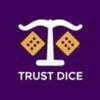Four times this past weekend I was dealt four cards to a royal flush, and I didn’t hit one. Why not all five cards as opposed to just four? Also, can a video poker machine be programmed to deal four cards to a royal to encourage continued play on my part, and then be programmed to never allow me a royal flush? Ellen R.
The ever-elusive royal flush, Ellen, is the best hand you can make in video poker. It receives the highest payout available and it occurs whenever you string together an A-K-Q-J-T of the same suit. A four-card royal flush draw is the combination of any of the four cards necessary to make a royal flush, such as a T-Q-K-A of spades.
Getting any royal, even with a draw, is a rarity. Try approximately once every 40,000 hands. With a 52-card deck there are 2,598,960 possible hands, and only four of them can be royal dealt naturally. This means the odds of being dealt a royal flush without the need of a draw are 1 in 649,740. Them’s not very good odds, is they, Ellen?
Preventing big winning hands like royal flushes from appearing their theoretical number of times could be accomplished by secondary decision programming. A good programmer could write code that allows the computer within to stop a hand that is about to be dealt in favor of a different hand. But in a highly regulated industry like casinos, with most jurisdictions following Nevada’s regulation that the machines deal from a fair deck, it is safe to assume honesty in the machine you were playing.
Because you have to bet $110 to win $100 on most sports wagers, does that mean the house edge on a football game is 10 percent? That seems awful high to me. Dale C.
When it comes to sports betting, Dale, the last thing the casino wants is to be top heavy on any one team. They leave the gambling up to you and would prefer to just balance the books on every game. That’s what the point spread is for. Getting identical action on both sides.
Your cost – the house edge — on any sporting bet where you wager $110 to win $100 is 4.55 percent. That extra $10 is NOT a percentage edge, but a commission or vigorish (a.k.a. vig), taken by the house as compensation for allowing you to bet on the game.
For example, let’s say that both you and I are betting on the Detroit/Green Bay football game. You favor the Packers, while I’m on the Detroit Lions. We each bet $110, which gives the sports book a total cash inflow of $220. If you win, you turn in your winning ticket and get back $210 — your original $110 plus $100 in winnings. Now here’s the barnyard math, Dale, which will get you to that 4.55 percent casino advantage.
The house edge is the $10 the casino keeps from the $220 total we staked on the game. Divide 10 by 220, and you get .0455. Now multiply .0455 by 100 to convert to a percentage, which gives the house 4.55 percent of total we bet on the game. Ah, but that’s the edge on both of our wagers. The percentage of sports bets you have to win to break even against the house is at least 52.28 percent of any point-spread wagers you make.
Gambling Wisdom of the Week: “Playing poker with great players is like trying to juggle a chainsaw, machete, and an axe. One mistake and you lose a hand.” –VP Pappy




















